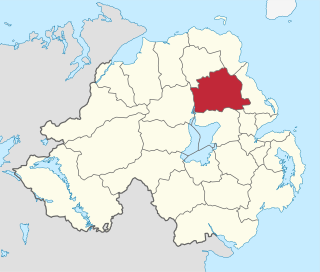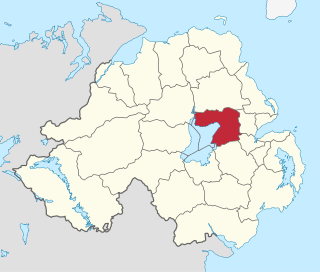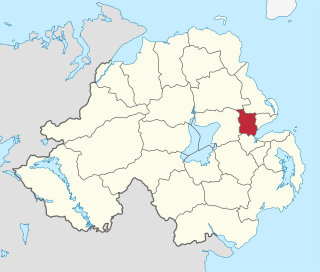This article needs additional citations for verification .(June 2016) (Learn how and when to remove this template message) |
| |||
All 51 seats to Belfast City Council 31 seats needed for a majority | |||
| Turnout | 62.54% | ||
Map showing the area of Belfast City Council | |||
| |||
Elections to Belfast City Council were held on 30 May 1973 on the same day as the other Northern Irish local government elections. The election used eight district electoral areas to elect a total of 51 councillors.

Belfast City Council is the local authority with responsibility for part of the city of Belfast, the capital and largest city of Northern Ireland. The Council serves an estimated population of 333,871 (2011), the largest of any district council in Northern Ireland, while also being the fourth smallest by area. Belfast City Council is the primary council of the Belfast Metropolitan Area, a grouping of six district councils with commuter towns and overspill from Belfast, containing a total population of 579,276.
Northern Ireland is divided into 11 districts for local government purposes. In Northern Ireland, local councils do not carry out the same range of functions as those in the rest of the United Kingdom; for example they have no responsibility for education, road-building or housing. Their functions include planning, waste and recycling services, leisure and community services, building control and local economic and cultural development. The collection of rates is handled centrally by the Land and Property Services agency of the Northern Ireland Executive.
The elections were the first following the reorganisation of local government in Northern Ireland, brought about by the Local Government (Boundaries) Act (Northern Ireland) 1971 & Local Government Act (Northern Ireland) 1972, which replaced the previous FPTP ward system with a new system of proportional representation using multi-member district electoral areas.

The Local Government (Boundaries) Act 1971 was an Act of the Parliament of Northern Ireland, passed in 1971 to replace the previous system of local authorities established by the Local Government (Ireland) Act 1898. The system was based on the recommendations of the Macrory Report, of June 1970, which presupposed the continued existence of the Government of Northern Ireland to act as a regional-level authority.

The Local Government Act 1972 was an Act of the Parliament of Northern Ireland that constituted district councils to administer the twenty-six local government districts created by the Local Government (Boundaries) Act 1971, and abolished the existing local authorities in Northern Ireland.
The Ulster Unionist Party maintained its position as the largest party, winning just short of a majority, and William Christie continued as Lord Mayor.

The Ulster Unionist Party (UUP) is a unionist political party in Northern Ireland. Having gathered support in Northern Ireland during the late-nineteenth and early-twentieth centuries, the party governed Northern Ireland between 1921 and 1972. It was supported by most unionist voters throughout the conflict known as the Troubles, during which time it was often referred to as the Official Unionist Party (OUP). Between 1905 and 1972 its MPs took the Conservative whip at Westminster, considered as part of the Conservative Party.
Sir William Christie, MBE, JP, ODAS was an Ulster Unionist politician who served as Lord Mayor of Belfast.
















